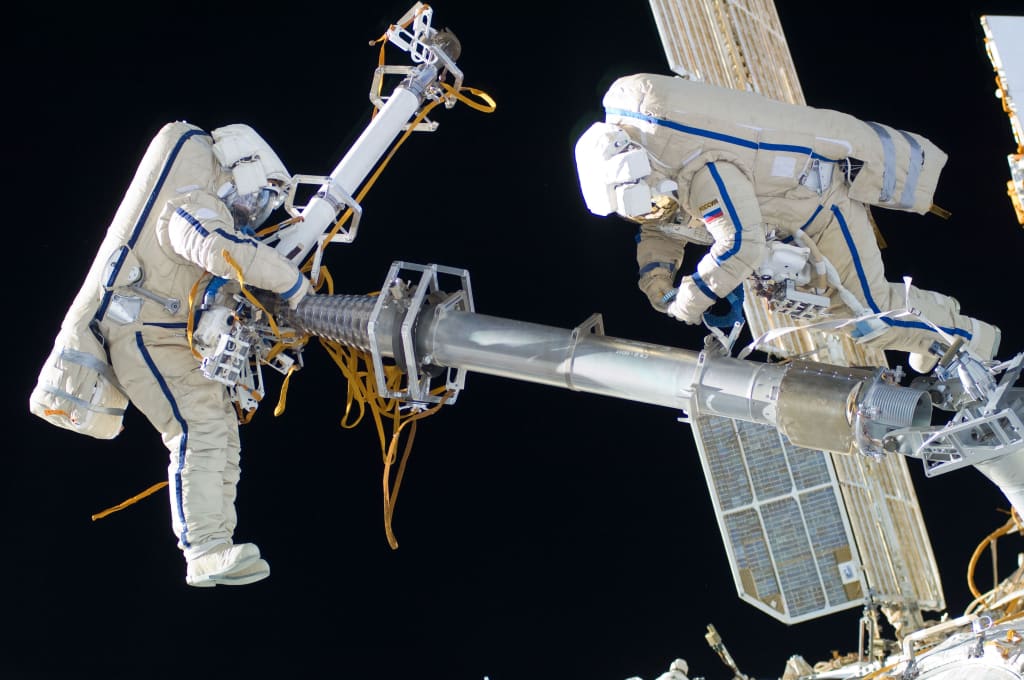NASA's Startling Legend in the Environment Emergency
Earth content

Over a year after first recognizing methane tufts from its roost on board the Global Space Station (ISS), information from NASA's discharge instrument is presently being utilized to distinguish point-source emanations of ozone-depleting substances, a capability that has shocked even its creators.
Produce, short for Earth Surface Mineral Residue Source Examination, was sent off in July 2022 to plan 10 vital minerals on the outer layer of the world's parched districts. Those mineral-related perceptions, which are as of now accessible to specialists and people in general, will assist with working on comprehension of what dust that gets lobbed into the environment means for the environment.
Distinguishing methane was not part of Produce's essential mission, but rather the instrument's planners anticipated that the imaging spectrometer should have the capacity. Presently, with in excess of 750 discharge sources distinguished since August 2022—some little, others in far-off areas, and others determined in time—the instrument has more than conveyed in such a manner, as per another review distributed in the diary.
"We were somewhat mindful at first about how we could manage the instrument," said Andrew Thorpe, an exploration technologist in the discharge science group at NASA's Stream Drive Research facility in Southern California and the paper's lead creator. "It has surpassed our assumptions."
By knowing where methane emanations are coming from, administrators of landfills, horticulture destinations, oil and gas offices, and other methane makers have a chance to address them. Following human-caused outflows of methane is critical to restricting environmental change since it offers a relatively minimal expense and a quick way to deal with lessening ozone-depleting substances. Methane waits in the climate for about 10 years; however, during this range, it depends on being multiple times more impressive at catching intensity than carbon dioxide, which stays for a really long time.
Produce has demonstrated compelling ability to spot outflow sources both large (a huge number of pounds of methane per hour) and shockingly little (down to the many pounds of methane per hour). This is significant on the grounds that it grants recognizable proof of a more noteworthy number of "super-producers"—sources that produce unbalanced portions of all-out discharges.
The new review reports how Transmit, in view of its initial 30 days of ozone-harming substance location, can notice 60% to 85% of the methane crest commonly seen in airborne missions.
From a few thousand feet over the ground, methane-identifying instruments on airplanes are more delicate, yet to warrant sending a plane, specialists need earlier signs that they'll distinguish methane. Numerous regions are not analyzed in light of the fact that they are viewed as excessively remote, excessively unsafe, or excessively expensive. Also, the missions that, in all actuality, do happen cover somewhat restricted regions for brief periods.
Then again, from around 250 miles (400 kilometers) above the space station, Transmit gathers information over an enormous area of the planet, specifically the bone-dry districts that fall between 51.6 degrees north and south. The imaging spectrometer catches 50-mile-by-50-mile (80-kilometer-by-80-kilometer) pictures of the surface—specialists refer to them as "scenes"—including numerous locales that have been past the range of airborne instruments.
"The number and size of methane tufts estimated by Discharge all over our world is dazzling," said Robert O. Green, a JPL senior examination researcher and Radiate's chief examiner.
To help source ID, the Emanate science group makes guides of methane crest and delivers them on a site, with hidden information accessible at the joint NASA-US Geographical Overview Land Cycles Conveyed Dynamic Document Place (LP DAAC). The mission's information is accessible for use by people in general, researchers, and associations.
Since Transmit started gathering perceptions in August 2022, it has archived more than 50,000 scenes. On September 1, 2022, the instrument recognized a bunch of emanations sources in a seldom-concentrated locale of southern Uzbekistan, identifying 12 methane tufts adding up to around 49,734 pounds (22,559 kilograms) each hour.
Moreover, the instrument has spotted a crest far more modest than anticipated. Caught in a remote corner of southeastern Libya on September 3, 2022, one of the littlest sources so far was producing 979 pounds (444 kilograms) each hour, in light of evaluations of neighborhood wind speed.
Discharge was chosen from the Earth Adventure Instrument-4 requesting under the Geology Division of NASA's Science Mission Directorate and was created at NASA's Stream Impetus Lab, which is overseen for the organization by Caltech in Pasadena, California. The instrument's information is accessible at the NASA Land Cycles Disseminated Dynamic Document Place for use by different specialists and the general population.
About the Creator
Enjoyed the story? Support the Creator.
Subscribe for free to receive all their stories in your feed. You could also pledge your support or give them a one-off tip, letting them know you appreciate their work.






Comments (1)
Keep sharing great content about NASA with us using Vocal